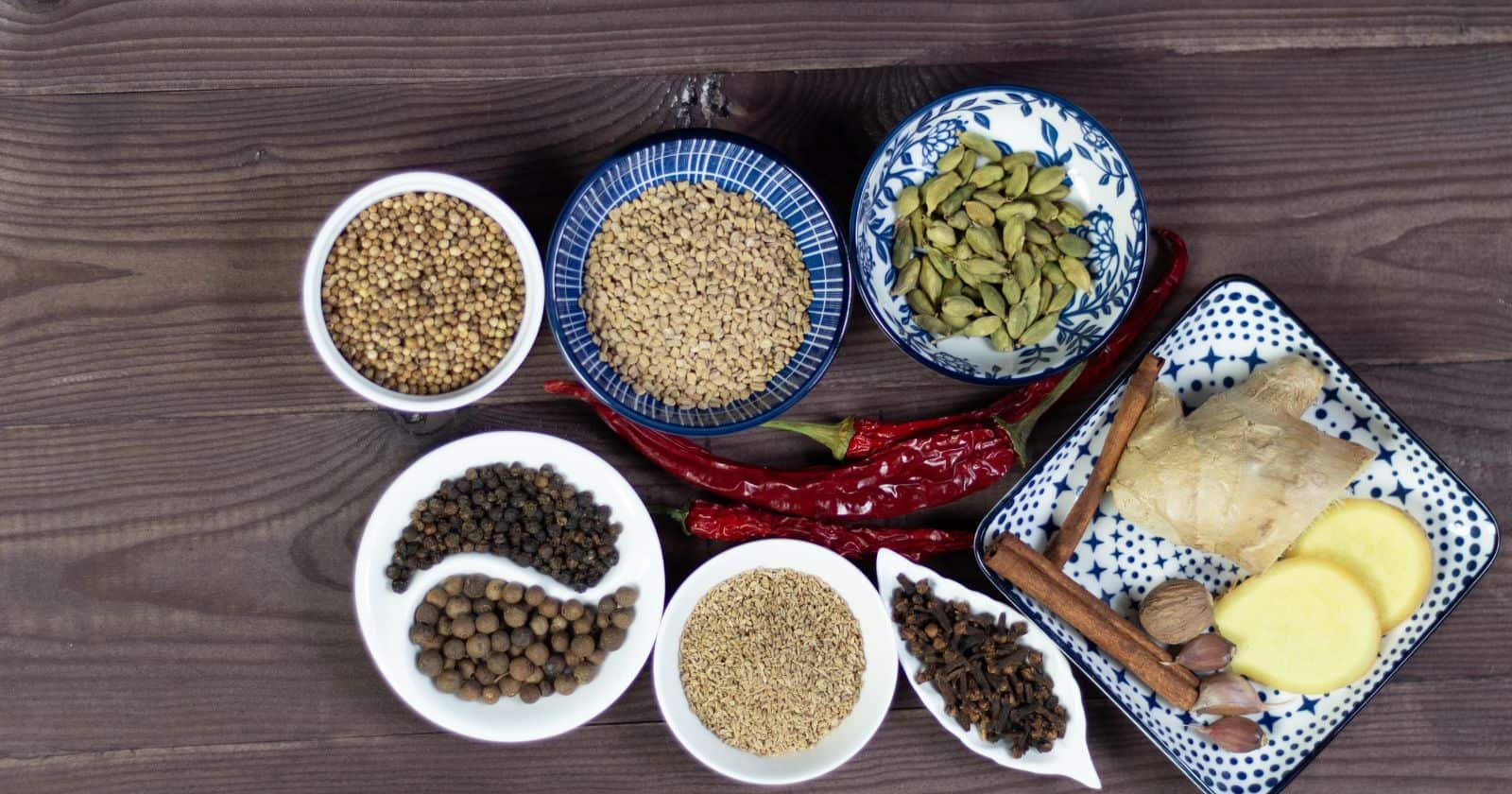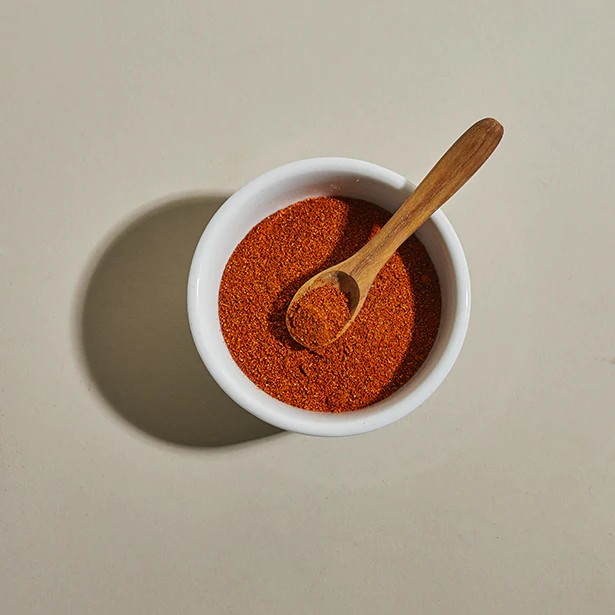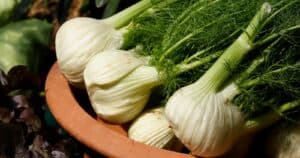Are you looking to
This bold, fragrant Ethiopian
From traditional recipes to unique creations, this exotic blend will take your mealtime experiences on an adventure.
At its core are flavorful foundational spices like fenugreek, cloves, black pepper, and cumin—all blended in just the right way.
Not only do they provide a pleasing aroma, but they also offer numerous health benefits! Plus, once you understand the basics of berbere, you cannot limit what dishes you’ll create with it.
Whether you use it as a marinade or stew base or mix it into sauces and stews, this Ethiopian staple will set your plate apart!
Introduction To Berbere: What Is It And What Makes It Unique?

Berbere is a
The ingredients used in berbere vary from region to region but typically include chili peppers, coriander, garlic, ginger, Ethiopian holy basil (besobela) seeds, salt, and sometimes ajwain or rue.
It wasn’t until trade with India started around 400 years ago that spices such as cumin, coriander, cardamom, cinnamon, cloves, nutmeg, and black pepper became widely available in Ethiopia.
Berbere is essential for many traditional Ethiopian dishes like doro wat or kitfo.
Imagine eating these dishes without the berbere – the red pepper powder that gives them their palatable fire!
Berbere is also used as an ingredient for marinating meat before cooking it on open-fire grills or roasting it in clay ovens called ‘mitad’ or ‘mogogo.’ In short, no Ethiopian kitchen can be complete without berbere!
Culinary Uses For Berbere: Recipes And Dishes That Feature This Spice Blend
Berbere can be used as a rub for meats like chicken or beef. You can also use it as a paste or seasoning to add flavor to your dishes.
Berbere is often used in Ethiopian and Eritrean cuisine to give food an extra kick of flavor. Here are some popular dishes that use berbere:
Doro Wat
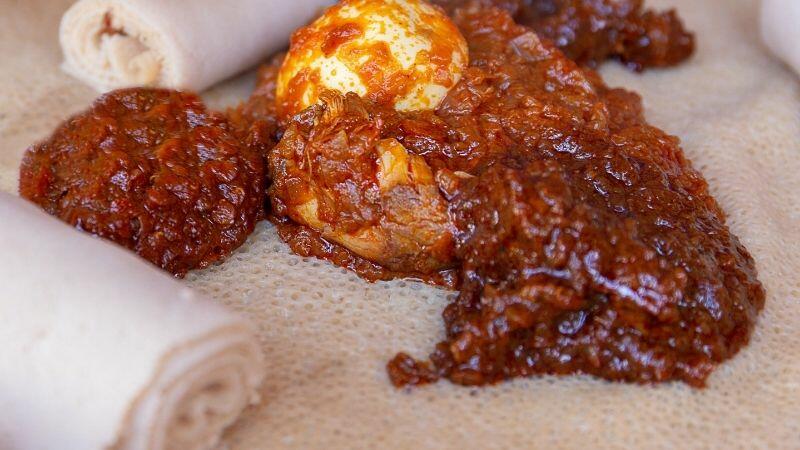
This is a traditional Ethiopian chicken stew made with berbere, onion, garlic, and ginger. It is typically served with injera, a sourdough flatbread used to scoop up the stew.
Tibs
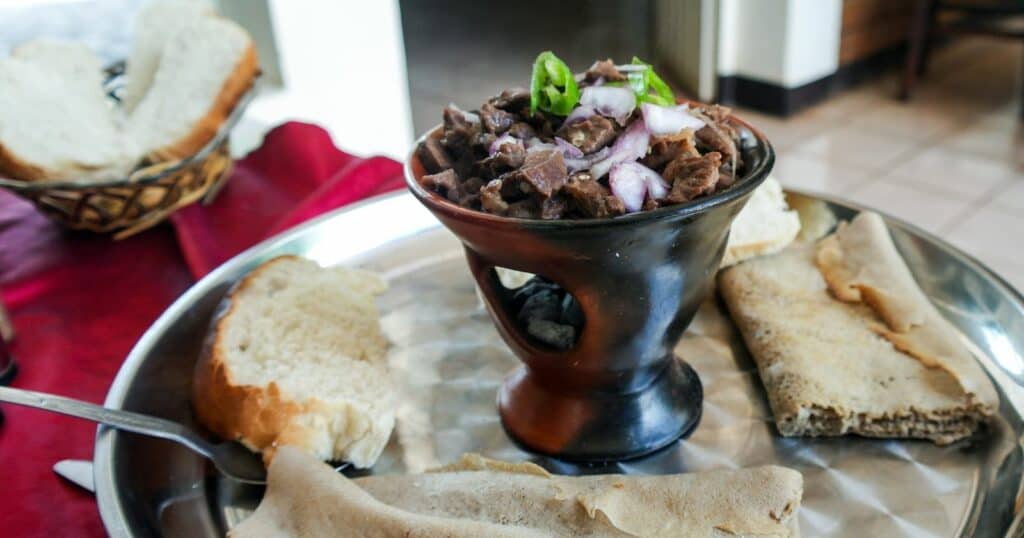
This popular Ethiopian dish is made with beef or lamb and sautéed with onions, garlic, and peppers. Berbere is added to the mixture for a spicy kick.
Misir Wat
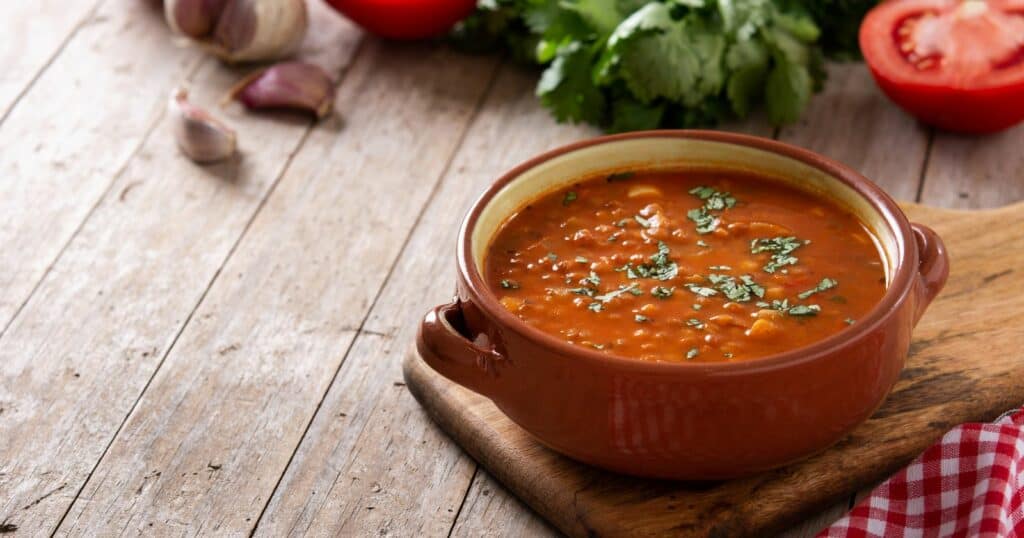
This is a spicy lentil stew that is a staple in Ethiopian cuisine. Berbere is a key ingredient in this dish, along with onion, garlic, ginger, and tomatoes.
Kitfo
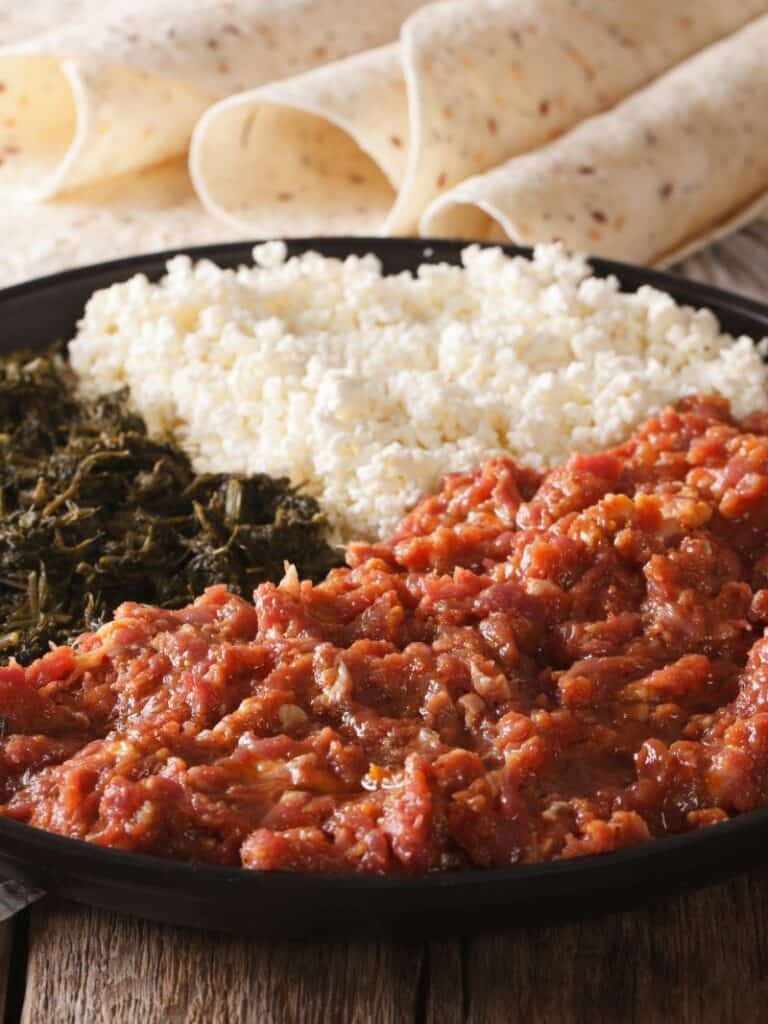
This is a dish made from ground beef, seasoned with mitmita (a spicy chili powder) and berbere, and then mixed with clarified butter. It is usually served raw, like a tartare, with injera.
Shiro
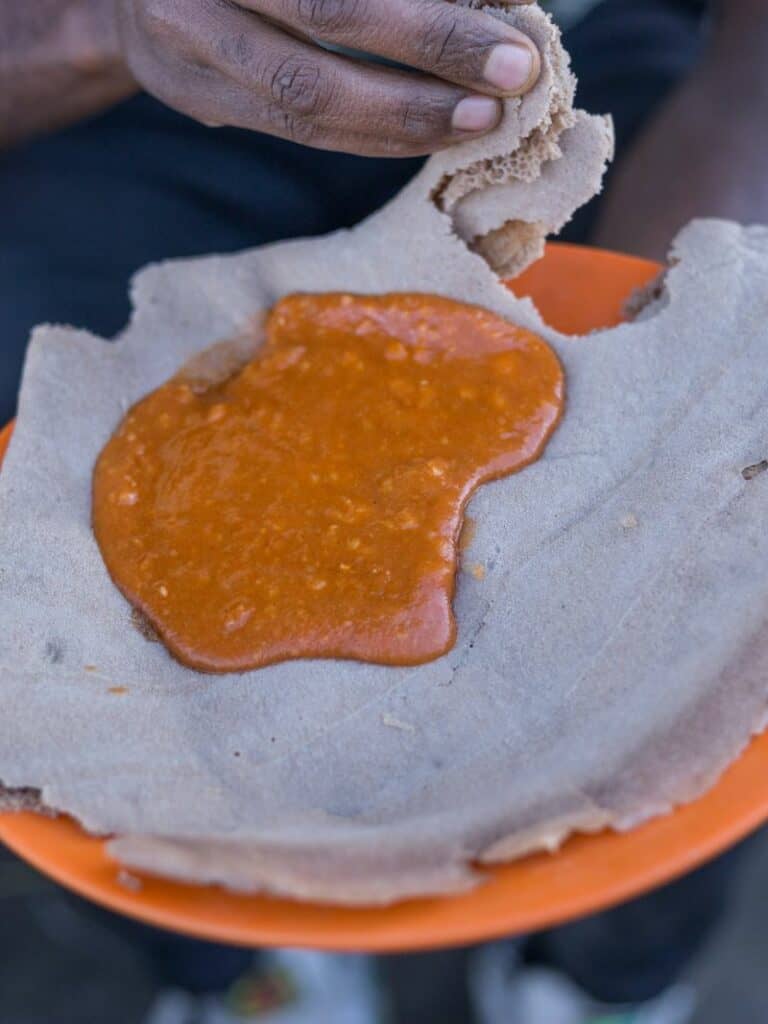
This vegan Ethiopian dish is made from ground chickpeas or lentils simmered with berbere, garlic, and ginger until they form a thick stew. It is typically served with injera or bread.
If you’re looking for new ways to incorporate berbere into your cooking repertoire, there are plenty of recipes online that you can try out!
Health Benefits Of Berbere: What You Need To Know
Not only does Berbere add flavor to dishes, but it also has numerous health benefits. Studies have shown that it can support healthy blood sugar levels and may reduce the symptoms and incidence of diabetes.
Additionally, Berbere contains anti-inflammatory properties that can help reduce inflammation in the body and improve heart health by lowering cholesterol levels.
Furthermore, Berbere is rich in antioxidants which can help protect against oxidative stress and boost immunity.
In addition to its health benefits, Berbere is easy to incorporate into your diet. You can use it in curries or stews for an extra kick of flavor or sprinkle it on roasted vegetables for added zest.
Substitutes for Berbere: Exploring New Flavors in Your Cooking
Berbere is a popular
Ras El Hanout
This is a North African
It also contains additional spices like ginger and turmeric, which adds a unique flavor to dishes.
Garam Masala
This is a traditional Indian
It also contains cinnamon and nutmeg, which give it a slightly different flavor profile.
Curry Powder
This blend of spices is commonly used in Indian and Southeast Asian cuisine. It typically contains cumin, coriander, turmeric, and other spices like ginger and chili powder.
While it may not have the same flavor as Berbere, it can still add a depth of flavor to dishes.
How To Make Berbere At Home: Step-by-Step Guide And Tips
Berbere Spice Blend
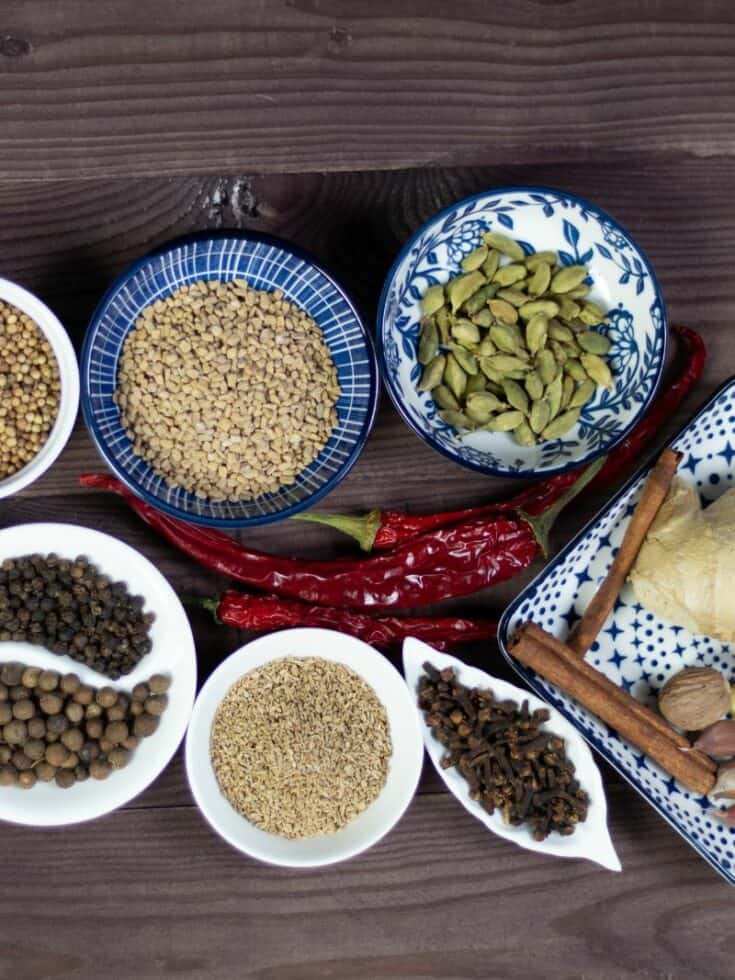
Berbere is a traditional Ethiopian spice blend that can add a unique and delicious flavor to many dishes.
Making your own berbere spice blend at home is simple, and you can customize the blend to your liking by adjusting the spice levels.
Ingredients
- 1/2 cup dried red chili peppers
- 1/4 cup paprika
- 1 tablespoon coriander seeds
- 1 tablespoon cumin seeds
- 1 tablespoon cardamom pods
- 1 tablespoon fenugreek seeds
- 1 teaspoon black peppercorns
- 1/2 teaspoon cinnamon
- 1/2 teaspoon nutmeg
- 1/2 teaspoon allspice
- 1/2 teaspoon ground cloves
- 1/2 teaspoon sea salt
- 6 garlic cloves
- 1 tablespoon fresh ginger, peeled and chopped
Instructions
- In a skillet over medium heat, toast the chili peppers, coriander seeds, cumin seeds, cardamom pods, and fenugreek seeds until fragrant, about 1-2 minutes.
- Remove the skillet from heat and let the spices cool completely.
- In a spice grinder, blend the toasted spices, black peppercorns, cinnamon, nutmeg, allspice, and ground cloves until a fine powder forms.
- Add the paprika, sea salt, garlic cloves, and fresh ginger to the spice grinder and pulse until everything is well combined and forms a smooth paste.
- Store the berbere spice blend in an airtight container in a cool, dry place for up to 3 months.
Notes
To use the berbere spice blend, simply add it to your favorite dishes such as stews, soups, or sauces. You can experiment with the amount of berbere you use depending on how spicy you want your dish to be.
Enjoy the unique flavor that this homemade berbere blend can bring to your cooking!
Here are some tips and tricks to help you make the best berbere possible:
- Start with fresh, high-quality spices: The quality of your herbs will greatly affect the flavor of your berbere. It’s best to use whole spices and grind them yourself for the freshest taste.
- Adjust the heat level to your preference: Berbere is known for its spicy heat, but you can adjust the number of chili peppers or cayenne to your liking. If you prefer a milder
spice level, use fewer chili peppers or substitute with sweet paprika. - Use a blend of spices: Berbere typically includes a variety of spices, such as cardamom, cloves, coriander, and cumin. Using a combination of spices will create a complex and balanced flavor.
- Experiment with additional spices: While the traditional ingredients are a good place to start, don’t be afraid to add other spices like cinnamon, nutmeg, or turmeric to create your own unique blend.
- Store in an airtight container: To keep your berbere fresh for as long as possible, store it in an airtight container in a cool, dry place away from light and heat.
Where to Buy Berbere?
Berbere can be found at specialty stores that carry African or Ethiopian products and some natural food stores.
Online retailers such as Amazon also carry berbere
Amharic for pepper, berbere forms the flavor base of classic Ethiopian dishes such as doro wot and misir wot.
Like baharat and ras el hanout, it is ubiquitous in the land, but flavor composition varies from region to region and even from household to household.

